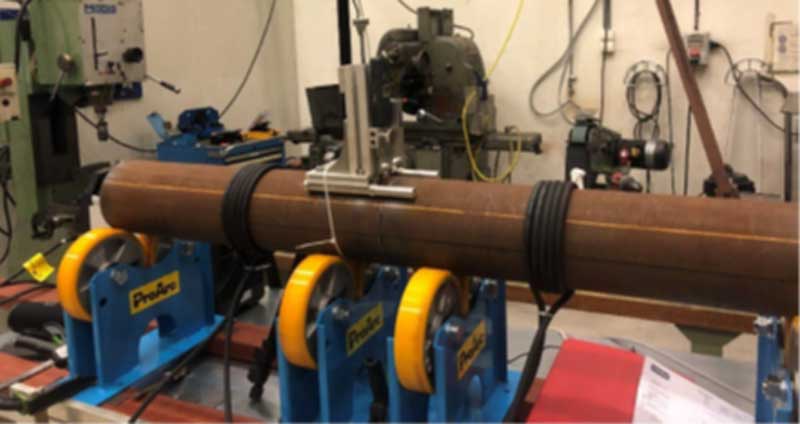- Rapport
- Värme och kyla
Weldability of District Heating Applications – Stage 2

The tests that have been done on DN 300 and DN 500 pipes in the welding laboratory, all show the same results as in phase 1, and that is that the residual field strength of individual pipes is increasing with a factor 4, when the pipes are moved together for welding. The magnetic field is measured just in front of the root face (see figure 2). Before each test, the pipes were demagnetised with a preprogramed demagnetising cycle. After this the pipe ends were wound with a current cable to a spool and a DC current ran through the spool, to exactly establish the magnetisation level, before the welding. A professional pipe welder has together with the team established a grade scale, to describe the difficulty level at different magnetisation levels.
Ladda ner rapporten
Weldability of District Heating Applications – Stage 2